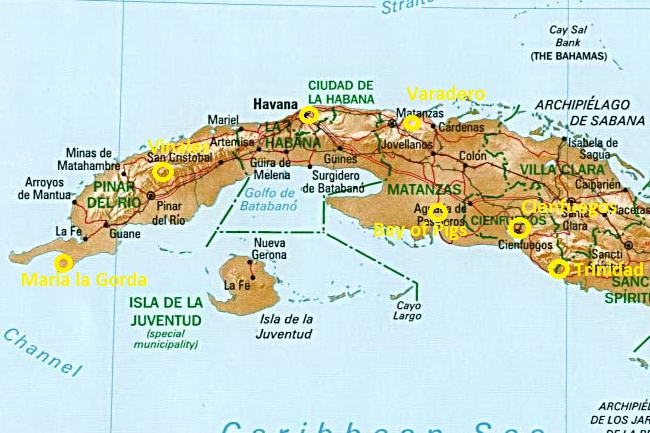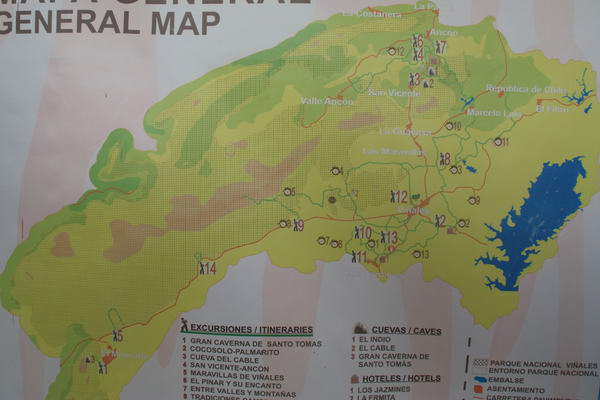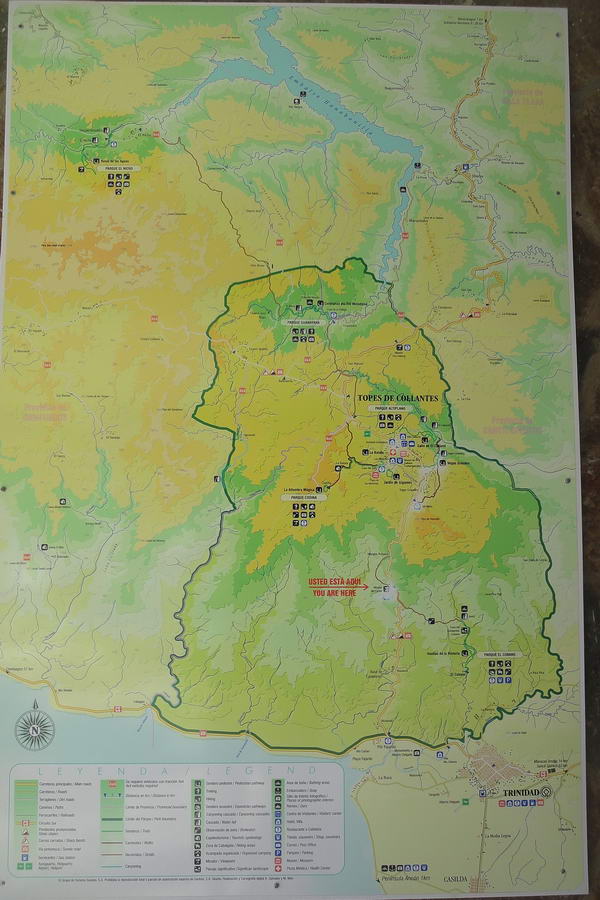 |
||||||||||
| Home | Photo | Gallery | Video | Info | ||||||
|
|
|||||||
|
|||||||
 Cuba with it's socialist
system and dual currency is not like ordinary market driven country, so
some practical advice can be helpful. But Cuba is changing a lot from
year to year so this may be outdated quickly. Let's hope Cuba will
still preserve some spirit of old Cuba and it will not become tourist
resort kitch in years to come when living conditions for Cubans
hopefully improve as market system will be at least partly introduced.
We had only 12 days, so stayed in western Cuba and up to Trinidad to the east only. Car rental in Cuba is expensive and state run business. It was about 80-90 usd per small car (not the smallest) like Kia Rio sedan in high Christmas season. If rental company does not want to book it over internet, no problem to find cars after arrival to Cuba in some rental place. International driving licence is not necessary, EU is ok, credit card is not necessary, only deposit of 200 usd/cuc was needed without card. But it is possible to travel from among major tourist place by commfortable tourist bus as well. Cuba is cash country, there are almost no ATMs and even the number of places to exchange foreign cash (best is Euro in this case) for peso convertible (cuc) is limited to bigger towns. Most things in Cuba can be bought by tourists only for peso convertible (1 cuc = 1 usd, but don't bring usd cash, they charge enemy surcharge on exchange of usd, better euros) - e.g. car rental, petrol, accomodation, long distance bus, eating in restaurant, entrance to sightseeings, diving. The number of things that tourist is able to to buy in national peso (rate is 25 national pesos for 1 convertible peso) is limited - e.g. fast food / fruits / vegetables from windows and stalls in the street and by the road, sometimes alcohol drinks (mostly rum) in bars for locals, sometimes food in local very simple restaurant. If one does not want to ask some Cuban to change peso convertible to peso national (foreigners are oficially not supposed to deal with peso national at all), then the easies is to pay in small peso convertible (1 or 3) for things where this is possible and ask to get returned in peso national. Uninformed tourist that does not know the exchange rate or does not ask to get returned in national peso will probably not get anything returned at all when paying by convertible peso for things listed national peso. We were never rejected and got enough national peso this way. Most tourist facilities in Cuba (accomodation and restaurants) are still state run. Private accomodation and restaurants should be preferred, as they provide generally better value for money and price can be a bit negotiated as well. Cubans can currently rent only 2 rooms per house and pay maybe 150 usd/cuc per month to government for this licence, so 20 usd/cuc for room is actually not bad price and usually can not be negotiated for much less. Some rooms have 2 large beds, good for 2 pairs for price of 1 room. One unpleasant thing in bigger towns are many intermediaries, trying to recommend restarants and accomodation to independent tourists. They have huge commisions for this, e.g. 20-30% of your future bill. Avoiding this means unfortunatelly not talking to any intermediary in the street (which often means not asking about restaurant or accomodation in the street at all !) and one can negotiate better price for e.g restaurant as they don't have to pay for the intermediary. Unfortunatelly, even people who rent private rooms are sometimes part of this intermediary business so they will advice some restaurant and immediately call there before you go there to claim commission later. Bottled water is expensive, about 1.2 usd/cuc for 1.5l bottle, only sometimes 5l canister for 2 usd/cuc can be bought. I personally put chlorine and later some flavour into water tap water. There are almost no supermakets in Cuba and it is difficult to find a place where e.g. bread can be bought and they may not have the bread even if you find that shop. Not mentioning some good cheese or sausage to eat with the bread - better to bring this from home. Restaurants are not very cheap in Cuba, e.g. 8-15 cuc/usd for complete menu with soup excl. drinks, but otherwise expensive seafood like lobsters or fresh fish cost almost the same as more ordinary beef or pork. There is lack of e.g. women's clothes (and pretty much everything...) among ordinary Cubans (who do not have access to tourist money and are not able to pay huge prices). If one brings there ANY second hand clothes, especially for women, it will be very appreciated as a gift and can be exchanged for souvenirs with some women sellers as well. |
 Maria La Gorda migh be
best for diving but what should generally not be missed in western Cuba
is Vinales for easy hiking, Old Havana for it's atmosphere and Trinidat
for it's atmosphere and surroundings including both sea and mountains.
Plus some islands like Isla de la Juventud would be probably great for
beach and sea lovers ...
|
 There was little info for independent hiking in Vinales even in LP guidebook. There were no maps to be bought even in Cuba, so here is if download what was pictured in Tourist Information Centre, a bit off Vinales town, so might be handy for people without own car. Walk number 9 was very good. |
 Topes de Collantes area near Trinidad is even worse for independent tourist. Most walks not only charge 5-10 usd/cuc per person as entrance but are compulsorily guided. We did Caburni hike that starts maybe 1km from main infocenter in Topes de Collantes village and it was quite good half day hike to medium waterfall and very nice but cold water jungle lake with another small waterfall. |
 |
|
|
|
|||||||
|
|
||||||||